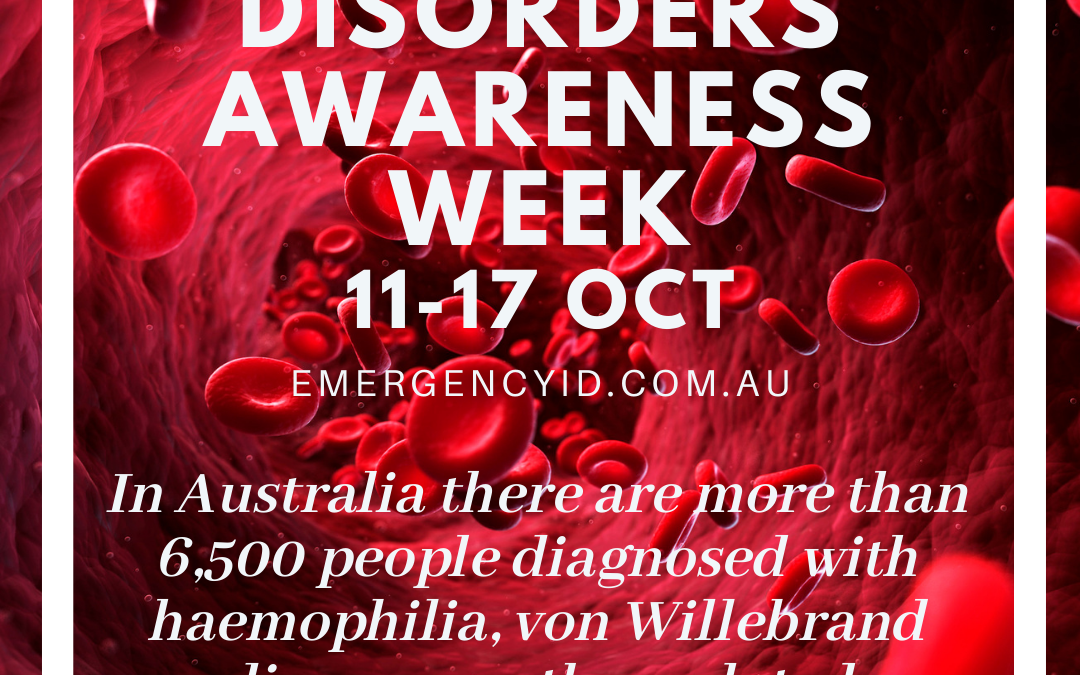Bleeding Disorders Awareness Week
More than 6,500 people in Australia have been diagnosed with a bleeding disorder.
HAEMOPHILIA
- Haemophilia occurs in 1 in 6,000-10,000 males internationally.
- Approximately 1 in 6,000 males has haemophilia A
- Approximately 1 in 25,000-30,000 males has haemophilia B
- Currently in Australia there are more than 3,000 people diagnosed with varied degrees of severity.
- There are 2 types of haemophilia:
- Haemophilia A (classical haemophilia) is the most common type and caused when there is not enough clotting factor VIII (8) in the blood.
- Haemophilia B (Christmas Disease) occurs when there is not enough clotting factor IX (9) in the blood
- Bleeding is most commonly internal, into the joints and/or muscles. It can happen without an obvious cause (sometimes called ‘spontaneous’), or as a result of injury.
- Over time this internal bleeding (‘bleeds’) can cause severe arthritis, chronic pain and disability.
- Specialised treatment is needed to help blood clot normally. With appropriate treatment haemophilia can be managed effectively.
- Haemophilia is an inherited condition and occurs in families. However, in 1/3 of cases it appears in families with no previous history of the disorder. The genetic alteration causing haemophilia is passed down from parent to child through generations. Men with haemophilia will pass the gene on to their daughters but not their sons. Women who carry the gene can pass the gene on to their sons and daughters. Sons with the gene will have haemophilia.
- Most women and girls who carry the gene do not have bleeding symptoms. Approximately 20-30% have reduced factor levels and may have a bleeding tendency. If they have have low factor levels in the range for haemophilia, ie less than 40% of normal, women and girls will have haemophilia.
VON WILLEBRAND DISEASE
- Von Willebrand disease (VWD – also known as von Willebrand disorder) is an inherited bleeding disorder. This disorder is caused by when there is not enough von Willebrand factor in the blood or it does not work the way it should. It takes longer for blood to clot and for bleeding to stop.
- VWD is the most common inherited bleeding disorder worldwide. More than 2,300 people have been diagnosed with VWD in Australia, but many more are thought to be undiagnosed. It affects both females and males from all racial backgrounds.
- Most people with VWD have few or no symptoms. The form causing moderate bleeding problems is uncommon and the severe form of VWD is rare.
Source & further information see Haemophilia Foundation Queensland (hfq.org.au)








